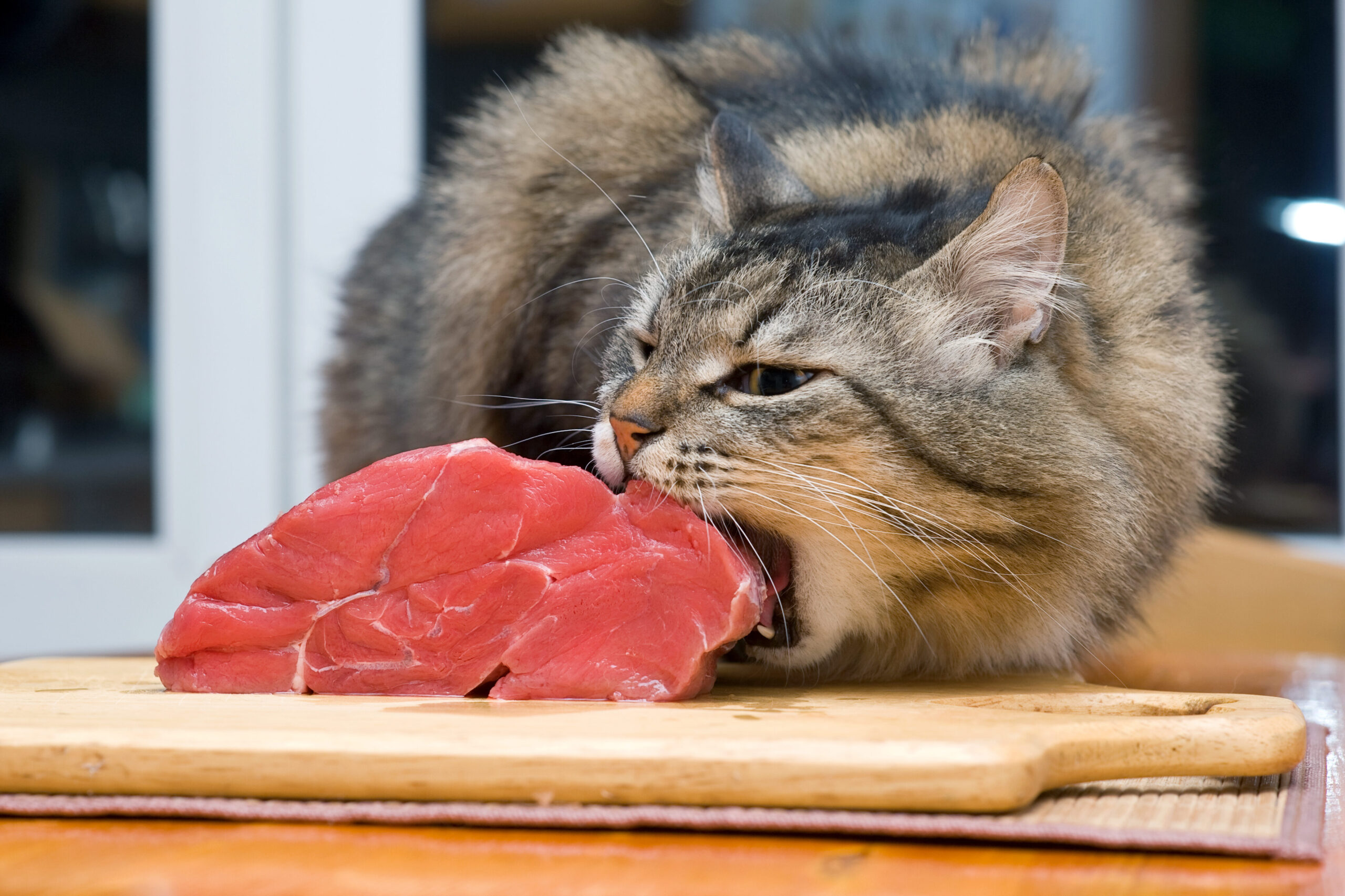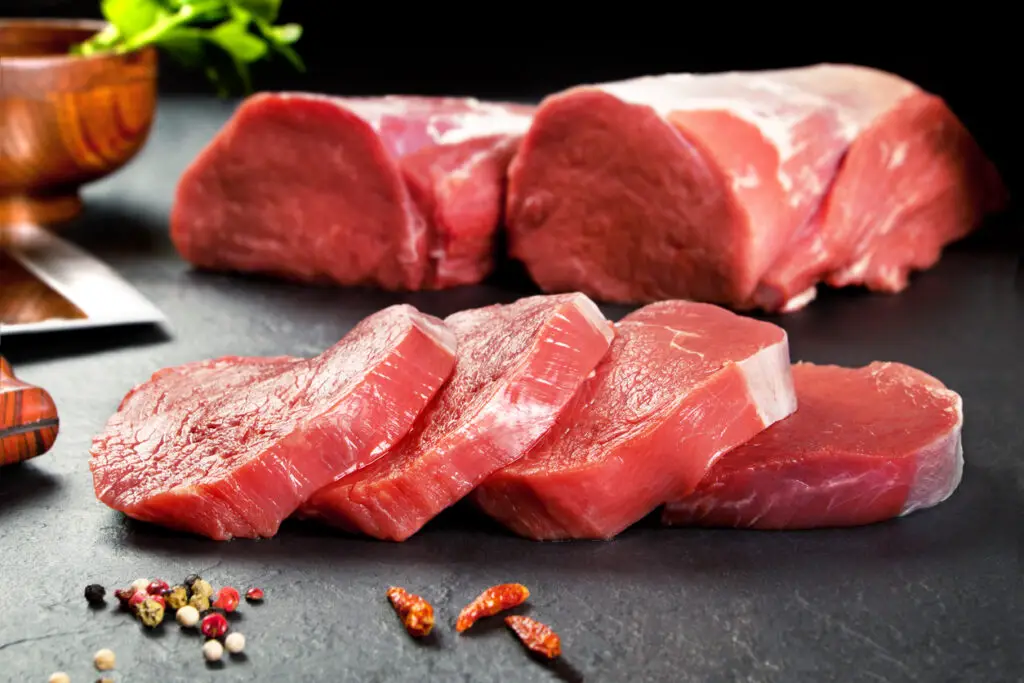1. Raw Meat Can Carry Dangerous Viruses, Including Bird Flu

One of the biggest concerns with raw pet food is that it can serve as a direct carrier for harmful viruses, including avian influenza. Poultry products are often used in raw diets, and if the meat comes from infected birds, there’s a risk of passing that virus onto pets. Unlike cooked food, which kills bacteria and viruses during the heating process, raw meat offers no such protection. This means that pets consuming contaminated raw food are exposed to a much higher risk of infection.
Even if a pet doesn’t immediately show symptoms, they could still carry and shed the virus, potentially infecting other animals or even humans in the household. The risk is particularly high in multi-pet homes where animals interact closely with each other. Additionally, if bird flu adapts in a way that allows it to jump between species more easily, feeding raw poultry could become an even bigger threat. With these uncertainties, experts agree that it’s better to err on the side of caution rather than expose pets to unnecessary health risks.
2. Pets Can Become Silent Carriers, Spreading the Virus to Humans

Many pet owners don’t realize that even if their dog or cat appears healthy, they can still spread infectious diseases. Bird flu doesn’t always cause immediate illness in all animals, meaning a pet consuming contaminated raw meat might not show any signs of infection. However, they can shed the virus through their saliva, feces, or even by simply licking their owner’s face or hands. This silent transmission poses a major concern, especially for people with weakened immune systems, young children, and elderly family members.
Beyond the household, pets that frequently visit dog parks, kennels, or veterinary clinics could unknowingly spread the virus to other animals. Since bird flu primarily affects birds but has the potential to infect mammals, experts worry about the possibility of it mutating further. While the chance of a widespread pet-to-human outbreak is still low, it’s a risk that shouldn’t be ignored. Taking simple precautions, such as opting for cooked pet food or handling raw meat with extreme care, can go a long way in preventing unnecessary exposure.
3. Bacterial Contamination Is a Bigger Risk Than You Think

While bird flu is a major concern, it’s not the only danger lurking in raw pet food. Uncooked meat can also carry other harmful bacteria like Salmonella, E. coli, and Listeria. These pathogens don’t just put pets at risk—they can also infect humans through cross-contamination in the kitchen or through direct contact with an infected animal. Even the simple act of cleaning a pet’s food bowl or handling their drool-covered toys can expose owners to harmful bacteria. This is why veterinarians strongly discourage raw feeding, especially in households with small children, elderly individuals, or immunocompromised family members.
Even if a pet has a strong immune system and doesn’t fall sick immediately, they can still shed bacteria in their saliva and feces. This means that the risk doesn’t end at mealtime. A dog that eats raw food and then licks its owner’s face could unknowingly transmit bacteria. Similarly, if an infected pet tracks bacteria around the home, surfaces like floors, furniture, and even bedding can become contaminated. This makes maintaining proper hygiene an ongoing battle—one that many pet owners aren’t fully prepared for.
4. Cooking Doesn’t Just Kill Germs—It Also Preserves Nutrients

One common argument in favor of raw pet food is that cooking destroys nutrients. While it’s true that some cooking methods can reduce certain vitamins, experts agree that the trade-off is well worth it when it comes to food safety. Many commercial pet foods are formulated to retain essential nutrients while eliminating harmful bacteria and viruses. In contrast, raw feeding leaves too much to chance—there’s no guarantee that the meat is free from contamination, and there’s always a risk of exposure to serious diseases like bird flu.
Cooking doesn’t just protect against infections; it also makes some nutrients more bioavailable. Certain proteins and fats become easier to digest when cooked, meaning pets can absorb more of the good stuff without the added risk. Additionally, pet food manufacturers carefully balance ingredients to ensure animals get the right mix of vitamins and minerals, something that’s much harder to achieve with a raw diet. At the end of the day, the goal is to keep pets both happy and healthy—and avoiding unnecessary risks is a big part of responsible pet care.
While raw pet food diets continue to have a dedicated following, the concerns surrounding bird flu and bacterial contamination are too significant to ignore. Veterinarians aren’t against giving pets the best nutrition possible, but they do urge pet owners to weigh the risks carefully. With safer, well-balanced alternatives available, it may be time to reconsider whether raw feeding is truly worth the potential dangers.


